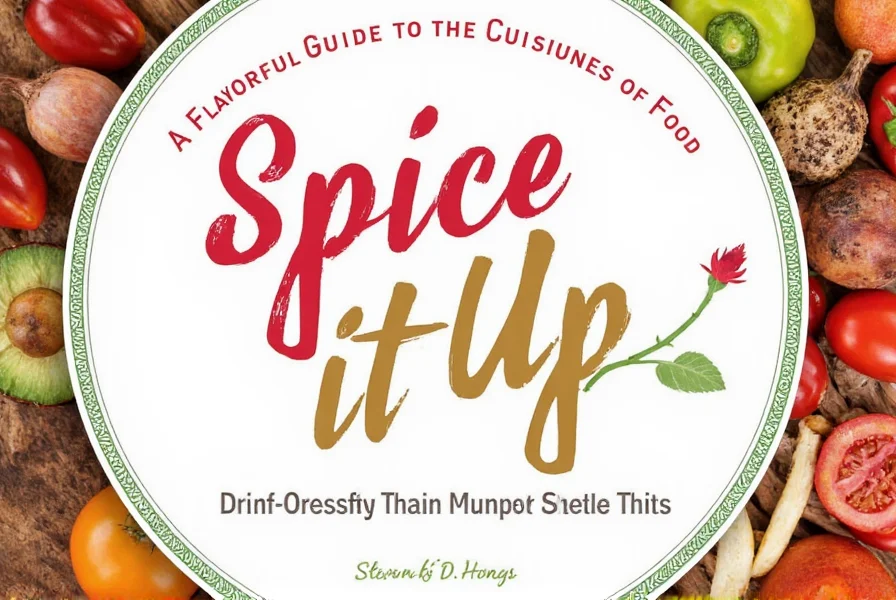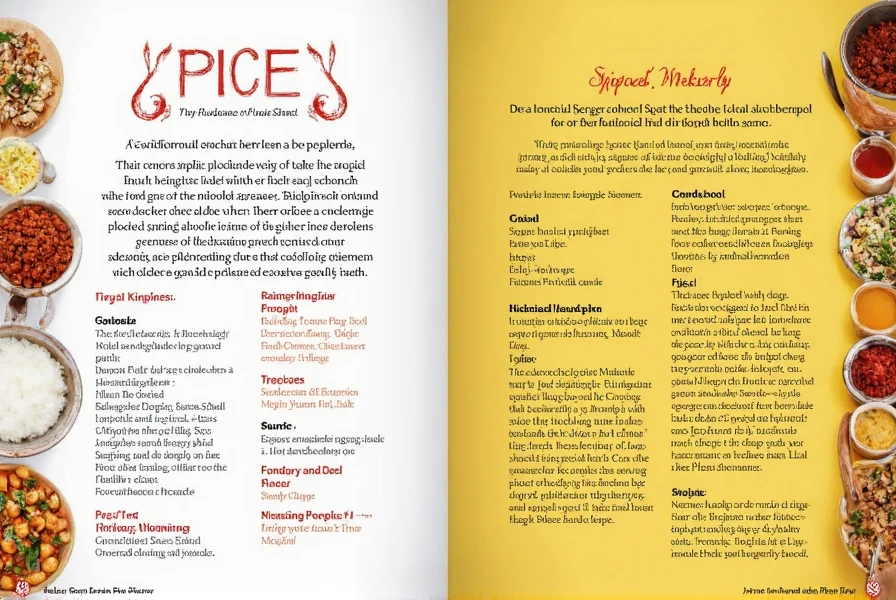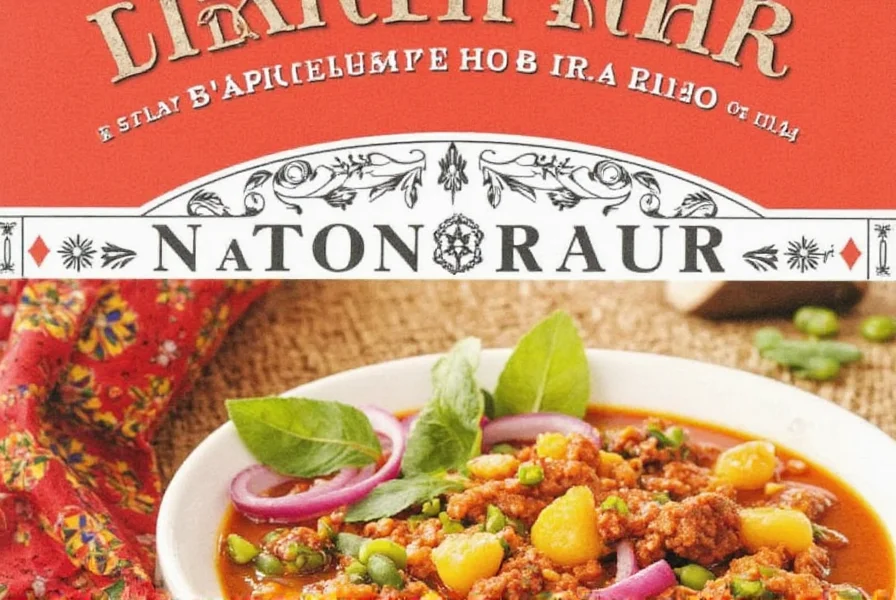Spice Up Your Plate: A Flavorful Guide to North African Dishes
Table of Contents
Introduction to North African Spices
North Africa is a treasure trove of rich, aromatic spices that have been used for centuries in traditional cooking. From the bustling souks of Morocco to the coastal towns of Tunisia, the region is known for its bold and complex flavor profiles. These spices are not just ingredients—they're a cultural expression, telling stories of trade, migration, and local identity.
The blend of Arab, Berber, and Mediterranean influences has created a unique culinary heritage. Spices like cumin, coriander, cinnamon, and harissa are staples in many North African kitchens. Whether you're making a slow-cooked tagine or a spicy lamb stew, these spices bring depth, warmth, and character to every dish.

Top 10 Spices Used in North African Dishes
North African cuisine relies on a few key spices that define its flavor profile. Here’s a quick list of the most commonly used ones:
- Cumin: Adds earthy warmth and is essential in many stews and spice blends.
- Coriander: Offers a citrusy, slightly sweet note that balances other spices.
- Cinnamon: Often used in both savory and sweet dishes for its warm, aromatic quality.
- Saffron: One of the most expensive spices, it adds a golden hue and floral aroma.
- Harissa: A fiery chili paste that brings heat and depth to sauces and marinades.
- Paprika: Adds smokiness and color, especially in dishes like Moroccan chorizo.
- Turmeric: Provides a vibrant yellow color and mild, earthy flavor.
- Garam Masala: A blend of spices often used in Moroccan and Algerian cooking.
- Allspice: Known as "Pimento" in some regions, it offers a complex, peppery flavor.
- Fenugreek: Adds a nutty, slightly bitter taste, often used in spice mixes and breads.
These spices can be found in local markets, specialty stores, or online. For those new to North African cooking, starting with a basic spice mix like ras el hanout (which includes up to 30 different spices) can be a great way to explore the region's flavors.

Essential Cooking Tips for North African Cuisine
If you're eager to try your hand at North African cooking, here are a few tips to help you get started:
- Start with a simple recipe: Begin with dishes like couscous, lentil soup, or a basic tagine before moving on to more complex meals.
- Use fresh spices: Freshly ground spices will always give better flavor than pre-packaged versions.
- Balance flavors: North African dishes often use a mix of sweet, sour, salty, and spicy elements. Don’t be afraid to experiment!
- Let the spices bloom: Toasting whole spices in oil before adding other ingredients helps release their full flavor.
- Use a clay pot: Traditional tagines are cooked in earthenware pots that help retain moisture and enhance flavor.
Another tip is to pair your dishes with flatbreads like khobz or msemen. These go perfectly with stews, grilled meats, and spicy dips.
Popular North African Dishes You Should Try
North African cuisine is diverse, with each country offering its own signature dishes. Here are a few must-try recipes from the region:
Moroccan Chicken Tagine
A classic North African dish made with chicken, preserved lemons, olives, and a variety of spices. It's typically cooked slowly in a clay pot, allowing the flavors to meld beautifully.
Tunisian Brik
A crispy, folded pastry filled with egg, tuna, and spices. It's a popular street food that showcases the region's love for bold flavors.
Algerian Chakhchoukha
A hearty dish made with shredded bread, tomatoes, peppers, and lamb or beef. It's served with a side of spicy harissa sauce.
Libyan Foul Medames
A breakfast staple made with slow-cooked fava beans, garlic, olive oil, and lemon. It's simple yet incredibly satisfying.
Maroccan Couscous
Steamed semolina topped with meat, vegetables, and a rich broth. It's a symbol of hospitality and family gatherings in North Africa.
Each of these dishes tells a story of tradition, culture, and community. They’re also perfect for sharing with friends and family over a long meal.
Buying Guide: Choosing the Best Spices for North African Dishes
If you're serious about cooking North African dishes, investing in high-quality spices is key. Here's a guide to help you choose the best products:
| Spice | Best Brands | Features | Use Cases | Target Audience | Suitable Occasions |
|---|---|---|---|---|---|
| Cumin | Brightland, McCormick | Earthy, warm flavor | Stews, curries, spice blends | Cooking enthusiasts, home chefs | Dinner parties, casual meals |
| Coriander | Penzeys, King’s Hawaiian | Citrusy, slightly sweet | Vegetable dishes, rice, spice mixes | Cooking beginners, spice lovers | Lunches, family dinners |
| Harissa | El Azizia, Amazigh | Fiery, smoky heat | Sauces, marinades, stews | Spice lovers, adventurous cooks | Weekend meals, social gatherings |
| Saffron | Saffron Threads, Kashmiri Saffron | Golden hue, floral aroma | Paella, rice dishes, desserts | Special occasion chefs, gourmet cooks | Celebrations, holidays |
| Ras El Hanout | McGee & Co., The Spice Garden | Complex, layered flavor | Meat, fish, vegetable dishes | Culinary professionals, spice connoisseurs | Cooking classes, special events |
When choosing spices, look for those that are organic, free from additives, and sourced from reputable suppliers. Always check the expiration date, as spices lose potency over time. For a more authentic experience, consider buying whole spices and grinding them yourself.
Conclusion
North African dishes offer a world of flavor, history, and culture. Whether you're a seasoned cook or just starting out, exploring the spices and recipes of this region can be an exciting journey. From the smoky heat of harissa to the warm notes of cumin and the floral touch of saffron, each spice tells a story and adds depth to your cooking.
So why not start by trying one of the recipes mentioned? With the right spices and a bit of practice, you can bring the essence of North Africa into your kitchen. Remember, the best dishes are those that make you feel connected to the people and traditions behind them. As the saying goes, “A meal shared is a memory made.”











 浙公网安备
33010002000092号
浙公网安备
33010002000092号 浙B2-20120091-4
浙B2-20120091-4